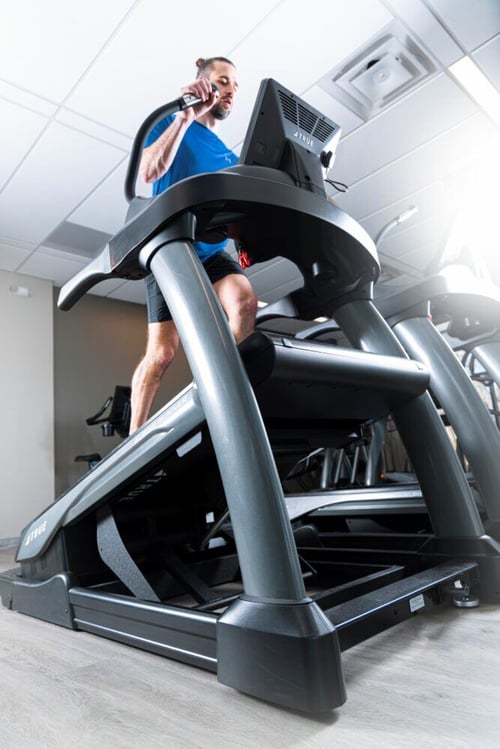Treadmill motors and the lower board systems are very rarely talked about honestly. That's one reason we have a Treadmill buying guide.

First of all, when a treadmill motor is rated by the continuous horsepower, that is an output. Without knowing the input, how many volts are being poured into it or how fast the motor is spinning, the CHP is not worth anything in terms of comparison.
Secondly, commercial motors are almost always an AC drive, while residential and light commercial motors are normally a DC drive. These pull power differently, with the AC drive being more powerful and generating higher torque and lasting longer, with the DC motor being typically more efficient and making better use of their input. And an AC motor is more expensive, and being slightly more complex, it may need more maintenance. Also, AC motors are generally louder than DC motors. So both have their place.
Now, a normal household outlet with can only generate enough power utilize between 2 and 2.6 continuous horsepower at a time, depending on if it's a 15 amp or a 20 amp circuit. And that's assuming there's nothing else on the circuit. So why does it matter if a treadmill has a stronger motor than that continuous rating? The answer is somewhat simple, a stronger motor is not working as hard, and while you may never use all of the supposed horsepower, if the treadmill isn't working as hard, will take a lot longer to reach the point where the lower board can't supply enough power to the treadmill. So a stronger motor doesn't work as hard and lasts a lot longer. There's a reason that lower grade of online treadmills only have a two or three year parts warranty, but regularly, we see better made residential treadmills with longer warranties lasting 10 years or longer.


Just understand that a treadmill is a system of components. The power comes in through the cord into the lower electronics board, and that board determines the right the proper amount of current to provide the motor to produce a speed versus the load of the user.
And every treadmill does this, though lots of treadmills try to pretend that their system is unique. The belt moves over the deck, based on what the lower board tells it to do, and as the belt moves over the deck it creates more friction, and the lower board has to pull more power.
Better quality components across the board matter at here, a strong motor is great, but a thinner belt and deck system will age a lot faster and pull power faster, + one of the reasons cheap online treadmills like to tout their motor while they have a short warranty is because the lower board quality matters at least as much as the strength of the motor.
And this is also why it helps to lubricate your treadmill and clean under the belt every year or so. And more often, with heavy use. Proper maintenance every 500 miles will increase the lifespan of the treadmill and reduces the amount of repairs needed.
And how long will a treadmill last? Well, first of all, the application matters, Residential, Vertical Market, or Full Commercial. Secondly, obviously, the sheer mileage and size of users matters. A family with 4 users with a pair over 200 lbs is very different than a single 150 lb user.
For a residential treadmill, with a minimal maintenance, assuming 1-2 service calls before the terminal service call, I normally tell clients that they should get 500 miles per year of the Parts Warranty of the machine+1. Thats (PW+1)*500 miles.
So a junky online/Dept. store tread with a 2 year parts warranty should get 1500k miles before calling it off, and a top of the line online/Dept store machine with a 5 year parts warranty will get 3000 miles. An average specialty brand treadmill has a 7 year parts warranty, so thats 4k miles, while a top of the line residential machine with a 10 year parts warranty should get 5500 miles.
Assume Landice has a 10 year parts warranty for these purposes, and if the machine has a reversible deck and you remember to flip it by 4k miles, add another 1000 miles.




COMMENTS